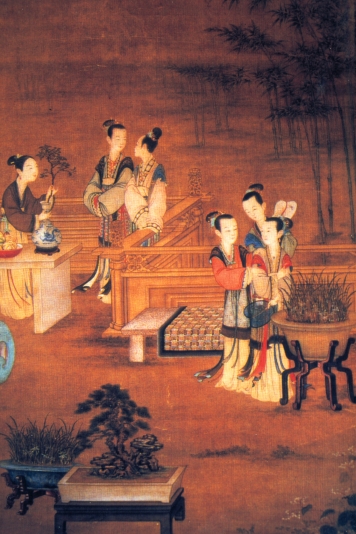
Although there are legends dating back at least to the 3rd and 4th centuries about Taoist figures said to have had the power to shrink entire landscapes to the size of a vase, written descriptions of miniature landscapes are not known until the Tang Dynasty . As information at that point shows a fairly developed technique, (then known as "punsai") the making of miniaturized tree landscapes must have been taking place in China for some time, or possibly imported from outside.
Its earliest pictorial representation dates back to 706 and is found in a mural in a corridor leading to the tomb of Prince Zhang Huai at the site of the Qianling Mausoleum . Excavated in 1972, the frescoes show two maidens carrying penjing with miniature rocks and fruit trees.
The first highly prized trees are thought to have been collected from the wild and were full of twists, knots, and deformities. These were seen as sacred, with no profane value as firewood or for other ordinary purposes. These naturally reduced plants were believed to be endowed with special concentrated energies due to their age and their remote origin from human influence. The Chán Buddhist viewpoint continued to influence the creation of miniature landscapes. Other, younger, smaller plants that could be collected closer to civilization but still resembled the hardened ancient treasures of the mountains may have been selected. Horticultural techniques to simulate greater age by accentuating the size, texture, and shapes of the trunks, roots, and branches may have been used with these specimens.
From the Tang period onwards, various poets and essayists praised dwarf potted landscapes. A guild based on ornamental trees (dating from around 1276) is known to have supplied dwarf specimens for use in restaurants in Suzhou , Jiangsu province .
0 commenti :
Post a Comment